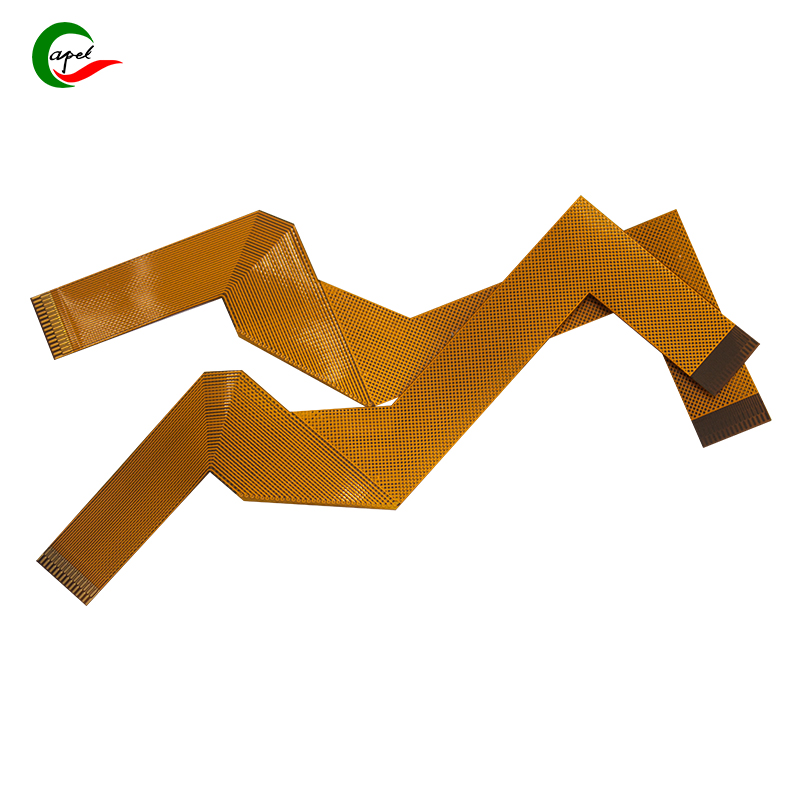Date: 2025-10-09
If you're designing compact electronics, you've probably wondered just how far we can push flexible PCB miniaturization. As someone who's worked on everything from medical implants to wearable devices, I can tell you we're reaching some fascinating limits.
Let me break down what's actually achievable today versus what's still laboratory magic.
Understanding the True Meaning of "Small"
When we discuss miniaturization in flex circuits, we're talking about three critical dimensions:
Component density per square millimeter
Trace width and spacing capabilities
Layer stacking within ultra-thin profiles
Current manufacturing standards routinely produce functional flex circuits at 2mm × 3mm - roughly the size of a sesame seed. But what can you actually do with that tiny canvas?
Real-World Applications: From Production to Prototype
Consumer Electronics Scale
In today's wireless earbuds and smartwatches, you'll typically find flex circuits around 3mm × 6mm. These represent the sweet spot between miniaturization and practical manufacturability.
I recently worked on a premium wireless earbud charging case that used a 4mm × 8mm flex PCB handling battery management, charging detection, and status reporting. The key was using 0201 components (0.6mm × 0.3mm) with 50μm trace widths.
Medical-Grade Miniaturization
This is where things get truly impressive. For a continuous health monitoring system we developed, the flex circuit measured just 2.5mm × 3mm while incorporating:
A micro biosensor array
Temperature compensation circuitry
Short-range RF communication capabilities
The manufacturing precision required approaches microscopic levels, with assembly performed by technicians using high-magnification systems.
Research Frontier
In laboratory environments, I've evaluated functional flex circuits as small as 1mm × 1mm. However, these remain primarily proof-of-concept devices with limited practical application. One recent prototype could only measure a single parameter and transmit data a few centimeters when externally powered.
The Fundamental Constraints
Why aren't these ultra-miniature circuits everywhere? Three hard limits:
Structural Integrity
At 2mm × 3mm, the polyimide substrate becomes incredibly delicate. I've witnessed production batches where the placement equipment's mechanical tolerances alone caused significant yield loss.
Power Management Reality
The fundamental paradox: even the smallest commercial batteries (like the 3.2mm × 2.5mm CP1254) physically dominate these ultra-small PCBs. Most implementations must choose between:
External power connections
Severely limited energy harvesting systems
Impractically short operational lifespans
Economic Viability
The cost curve becomes punishing beyond certain thresholds. Shrinking from 4mm × 8mm to 2mm × 3mm typically increases costs by 300-400% due to:
Yield reduction from ~95% to ~70%
Requirement for specialized assembly equipment
Exponential increase in testing complexity
Near-impossible rework scenarios
Practical Implementation Guidelines
Based on extensive field experience, here's when miniaturization makes sense:
Choose ultra-small (2mm × 3mm) when:
Developing implantable medical devices
Applications demand complete concealment
Size requirements outweigh cost considerations
Opt for consumer-scale (3mm × 6mm+) when:
Multiple functions are necessary
Reliability cannot be compromised
Production volumes exceed 10,000 units
Battery life represents a key feature
The Professional Perspective
Having designed hundreds of flex circuits, I've learned that maximum miniaturization rarely equals optimal engineering.
We can technically produce 1mm × 1mm flex circuits in laboratories, but the practical sweet spot for most applications remains 3mm × 6mm to 5mm × 10mm. This range provides the best balance of cost-effectiveness, reliability, and functional capability.
The most successful products understand that engineering excellence means finding the right size for specific applications rather than pursuing minimum size at any cost. While the future of flex PCB miniaturization continues to advance, the laws of physics and economics remain the ultimate arbiters of what's commercially viable today.
related link:
Capel manufacturing PCBs since 2009. Professional technology and high-precision Printed Circuit Boards involved in Medical, IOT, UAV, Aviation, Automotive, Aerospace, Industrial Control, Artificial Intelligence, Consumer Electronics etc..